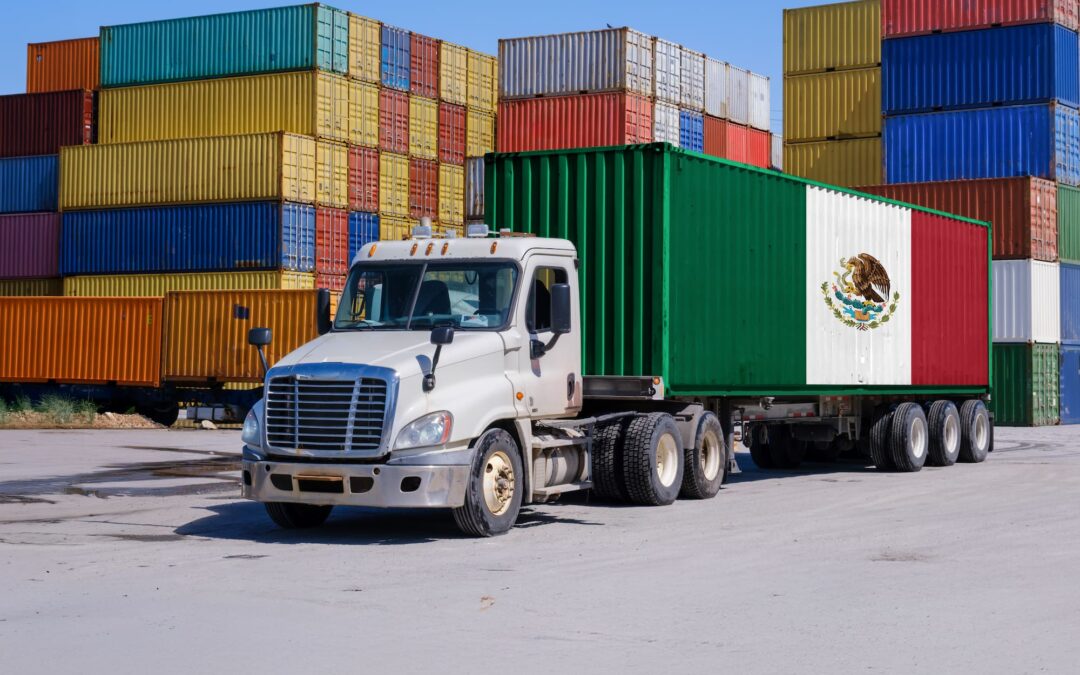A recent tax increase could soon result in Mexico tariffs affecting US imports by truck. On August 15, Mexico increased the tariff on non-FTA (Free Trade Agreement) countries from 19% to 33.5%. These levies apply to goods that are low-value parcels valued below $50. Cargo from countries under the USMCA (United States-Mexico-Canada Agreement) will remain duty-free. Meanwhile, USMCA parcels from $50 to $117 will see lower taxes of 17%. Despite the benefits the announcement will have on imports into the US from Mexico, it may negatively affect e-commerce. In particular, supply chains that bring goods from China to Mexico, then to the US. Although the tariffs will impact importing into the US, they will also directly influence domestic shipping.
How Are Mexico Tariffs Affecting US Imports?
Due to its proximity and cost efficiency, Mexico is a popular hub for US manufacturers and importers. Many US importers have distribution centers in Mexico and source their goods from countries like China. A higher tariff for goods under $50 could significantly raise costs for supply chains that import to Mexico. E-commerce is an example of billions of dollars of low-value goods from China. Along with increasing cost for the importer, higher prices can fall on US customers who receive the goods. Carriers that move the cargo domestically once it reaches the US will also feel the strain. With higher tariffs, shippers that bring goods into the US will face higher data reporting requirements.
Examples include customs brokers in Mexico, which require shippers to provide the US tax ID or EIN. Stricter customs enforcement could increase complexity and make it more difficult to import into the US by truck. There is still ambiguity about how customs will apply the new tariff. Carlos Barbosa, vice president of an e-commerce shipping provider, noticed that the behavior depends on how goods come to Mexico. He noted, “Some courier networks treat U.S.-fulfilled parcels under USMCA and exempt them under $50, while others charge the full tariff.” Shippers are moving goods into Mexico through commercial carriers instead of smaller couriers to avoid this.
How Might US Cross-Border And Domestic Shippers Respond?
Due to higher import costs, shippers may use near-shore manufacturing in Mexico instead of China. Manufacturing may even reshore back into the US to avoid tariffs and boost domestic shipping. Instead of reshoring manufacturing, fulfillment/distribution centers could return to the US and ship by truck to the final location. Higher import costs can also benefit US trucking by increasing the purchase and moving of local alternatives. If reshoring is difficult, the importer may look for other countries in Mexico’s FTA from which to import. Potential retaliation from China could further hurt supply chains by increasing expenses. President Trump’s reciprocal tariffs have similarly had a significant impact on shipping.
Whether importing into the US or moving goods domestically, you must be prepared before starting. Failure to prepare may lead to delays and monetary loss. An ideal way to begin is by speaking to a freight broker. Brokers are the middlemen between shippers and carriers and coordinate freight transport on behalf of the shipper. They do this by having a network of carriers to move your goods. Brokers also handle various parts of the logistics process, including providing documentation, negotiating rates, offering consultation, and more. Contact A1 Freight Solutions at info@a1fsinc.com or 786-375-9420 to speak to our brokers regarding moving cargo anywhere in the US.

